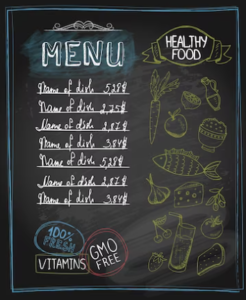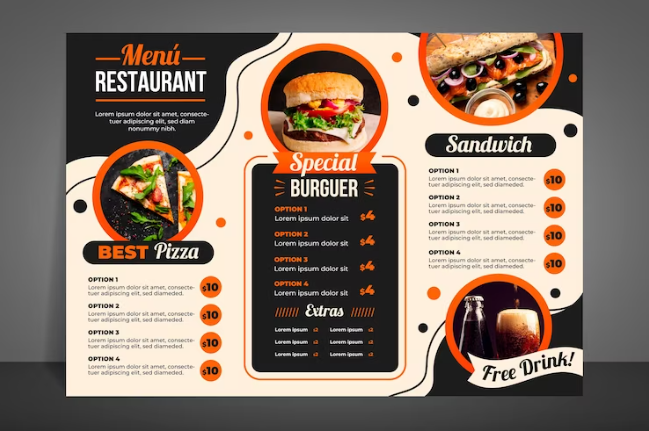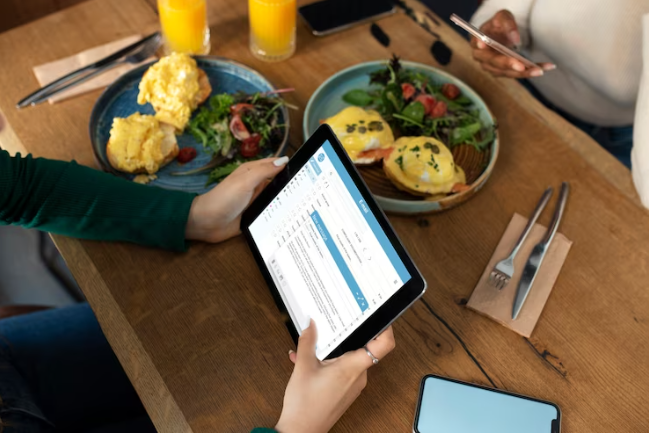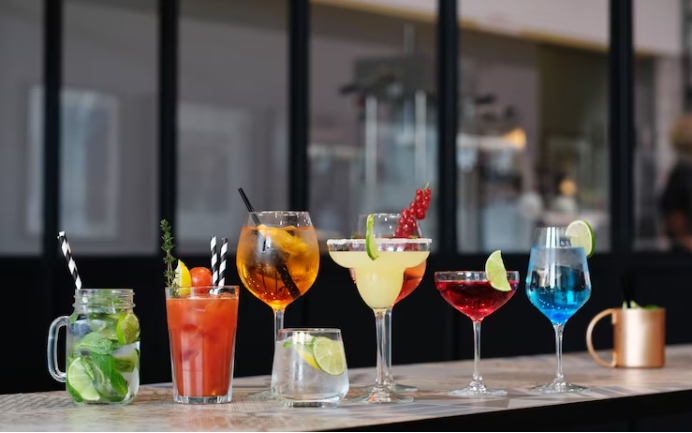Are you looking to increase profits at your restaurant? One way to do so is by utilizing the power of Restaurant menu psychology. By understanding how menu design can influence customer behavior, you can optimize your menu for greater sales and profitability.
Typography, colors, and layout all play a role in menu design. The way you present your menu items can impact how customers perceive them and ultimately influence their purchasing decisions.
By applying menu psychology principles, you can design a menu that not only looks visually appealing but also encourages customers to order more and spend more.
So, let’s dive into the world of restaurant menu psychology and discover how you can design a menu that maximizes profits for your business.

Understanding the Impact of Menu Design on Profitability
Want to increase your restaurant’s profits? Understanding how menu design impacts your bottom line is key!
Menu pricing strategies are a vital aspect of menu design that can make or break your restaurant’s profitability. It’s essential to price your menu items correctly, taking into account the cost of ingredients, labor, and overhead expenses. It’s also important to consider the perceived value of your menu items and the price points that your target market is willing to pay.
Another crucial aspect of menu design is crafting enticing menu item descriptions. Your menu descriptions should be detailed, descriptive, and use language that evokes emotions and cravings in your customers. Consider using sensory words like ‘juicy,”crispy,’or ‘rich’to describe your dishes. Highlight any unique ingredients or cooking techniques that make your menu items stand out from the competition.
By crafting enticing menu item descriptions, you can increase the perceived value of your menu items and encourage customers to order higher-priced dishes, ultimately boosting your restaurant’s profits.
The Power of Typography in Menu Design
You may not realize it, but the font used on a menu can greatly influence your dining experience. Typography trends have a significant impact on how people perceive the food and drinks offered in a restaurant.
For instance, using a clean, minimalist font can give off a modern and sophisticated vibe, while a more traditional, ornate font can convey a sense of elegance and formality.
Another important aspect of typography in menu design is font pairings. The right combination of fonts can create a cohesive and visually appealing menu that draws the customer’s attention to the most profitable items.
Combining a bold, attention-grabbing font with a more subdued, easy-to-read font can help highlight specials or high-profit items. Ultimately, the power of typography in menu design lies in its ability to create a sense of brand identity and influence customer behavior.
The Influence of Colors on Customer Behavior
Colors have a powerful impact on the behavior and emotions of customers, making it crucial for businesses to carefully consider their use of color in branding and marketing efforts. This is especially true in the context of restaurant menu design, where color psychology can be used to influence customer behavior and increase profits.
For example, warm colors like red and orange have been shown to stimulate appetite and increase excitement, making them perfect for highlighting signature dishes or special deals. On the other hand, cool colors like blue and green have a calming effect and can be used to create a more relaxing atmosphere, which can encourage customers to linger longer and order more items.
In addition to color psychology, menu aesthetics also play a role in customer behavior. A cluttered menu design or hard-to-read font can be overwhelming for customers and may even discourage them from ordering. On the other hand, a clean and visually appealing menu can make customers feel more confident in their choices and more likely to order additional items.
By carefully considering both the use of color and overall menu design, restaurants can create a more positive customer experience and ultimately increase their profits.
Optimizing Menu Layout for Greater Sales
When browsing through a menu, it’s helpful to have clear sections and placement of high-profit items, making it easier for customers to find what they’re looking for and order more. This is where visual hierarchy and menu engineering come in.
Visual hierarchy refers to the arrangement of items on a page in order of importance, and it can be used to guide customers towards high-profit items. For example, placing a high-profit item in a prominent position on the menu, such as in the top right corner or in a separate box, can catch the customer’s eye and increase the chances of them ordering it.
Menu engineering involves strategically placing items on the menu to maximize profits. This can be done by analyzing which items are the most profitable and then placing them in the most visible areas of the menu. Additionally, menu engineering can involve adjusting prices and the descriptions of items to encourage customers to order more.
By using both visual hierarchy and menu engineering, restaurants can create menus that not only look appealing but also encourage customers to order higher-profit items, ultimately leading to greater sales.
Applying Menu Psychology to Maximize Profits
By incorporating persuasive language and strategic placement, menus can entice customers to order more items and increase sales. Menu pricing strategies can be used to influence customer choices.
For example, restaurants can use anchoring, where they list a high-priced item first to make the rest of the menu seem more reasonably priced. They can also use bundling, where they offer items together at a discounted price to encourage customers to order more. Additionally, restaurants can use decoy pricing, where they list a high-priced item next to a slightly lower-priced item to make the lower-priced item seem like a better deal.
Menu item placement is also important in menu psychology. Restaurants can place high-profit margin items in the most visible parts of the menu, such as the top right-hand corner or in a box with a different color or font. They can also use menu engineering, which involves analyzing sales data to determine the most profitable items and strategically placing them on the menu.
By applying these tactics, restaurants can increase their profits and improve the dining experience for their customers.
By following this article, you can increase your chances of running a successful and profitable restaurant.
Frequently Asked Questions
How do menu design and psychology affect the taste of food?
Did you know that the visual appeal of a menu can affect the taste of your food? Color psychology plays a role in the design, as does menu item placement and pricing strategy.
Can menu design and psychology be used to attract a specific demographic of customers?
Want to attract a specific demographic of customers? Targeted marketing and consumer behavior play a crucial role. By understanding their preferences, you can design a menu that appeals to their taste and budget, ultimately leading to higher profits.
Is it possible for a restaurant to use too much psychology in their menu design and turn customers off?
You may turn customers off by overwhelming them with too much psychology in your restaurant menu design. Balancing psychology and authenticity is key to finding the right mix that appeals to your target demographic.
How do different types of cuisine affect menu design and psychology?
When designing a menu for a specific cuisine, cultural influences play a big role. Cuisine specific design should take into account cultural norms and preferences. For example, a Chinese menu may use red and gold colors for prosperity, while a Mexican menu may feature bold colors and images of traditional foods.
Can menu design and psychology be used to reduce food waste and increase sustainability in the restaurant industry?
You can utilize sustainability strategies and consumer behavior analysis to reduce food waste and increase sustainability in the restaurant industry. By analyzing customer preferences and adjusting menu offerings, you can reduce waste and promote responsible consumption.
Conclusion
So, there you have it – designing a profitable restaurant menu is no small feat. By understanding the impact of menu design on profitability, leveraging the power of typography, and using colors to influence customer behavior, you can create a menu that not only looks great, but also drives sales.
But it doesn’t stop there. By optimizing your menu layout, applying menu psychology, and constantly testing and iterating, you can continue to maximize profits and create an experience that keeps your customers coming back for more.
So, go forth and design a menu that not only satisfies your customers’ cravings, but also your bottom line.



